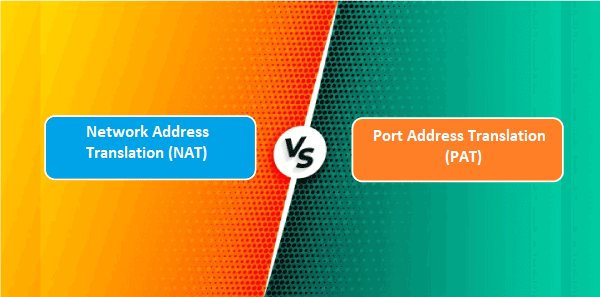Difference Between Network Address Translation (NAT) and Port Address Translation (PAT)

Network Address Translation (NAT) and Port Address Translation (PAT) are both techniques used in computer networking to enable multiple devices within a private network to access the internet using a single public IP address. While they share similarities, they have distinct differences in terms of their functionality and the way they handle IP address translation. Here are the key differences between NAT and PAT:
Network Address Translation (NAT):
-
Translation Level:
- NAT translates IP addresses at the network layer (Layer 3) of the OSI model. It modifies the source and/or destination IP addresses in packet headers while in transit across a router or firewall.
-
IP Address Translation:
- NAT maps private IP addresses to public IP addresses, allowing devices within a private network to communicate with devices on external networks, such as the internet, using a single public IP address.
-
Address Multiplexing:
- NAT supports one-to-one mapping (static NAT) and one-to-many mapping (dynamic NAT) of private IP addresses to public IP addresses. It can be configured to use a pool of public IP addresses for dynamic translation.
-
Connection Differentiation:
- In NAT, connections are differentiated based on IP addresses (source and destination) only. Each internal device is mapped to a unique public IP address, and traffic from that device is translated accordingly.
Port Address Translation (PAT):
-
Translation Level:
- PAT, also known as NAT Overload, operates at the transport layer (Layer 4) of the OSI model. It modifies both the source IP address and port numbers in packet headers to facilitate the translation of multiple devices using a single public IP address.
-
IP Address and Port Translation:
- PAT maps multiple private IP addresses to a single public IP address by using different port numbers to differentiate between connections. It translates both the source IP address and source port number of outgoing packets.
-
Port Multiplexing:
- PAT assigns unique port numbers to outgoing connections from devices within the private network. It uses port multiplexing to handle multiple connections simultaneously, with each connection identified by a unique combination of private IP address and port number.
-
Connection Differentiation:
- In PAT, connections are differentiated based on IP addresses (source and destination) as well as port numbers. Each internal device can initiate multiple connections simultaneously, with each connection being translated based on the combination of source IP address, source port, destination IP address, and destination port.
In summary, while both NAT and PAT enable multiple devices within a private network to share a single public IP address, NAT primarily focuses on IP address translation at the network layer, while PAT extends this functionality to include port-based translation at the transport layer. PAT offers a more granular and efficient approach to address translation by leveraging port multiplexing to handle multiple connections simultaneously.
Thank you,
